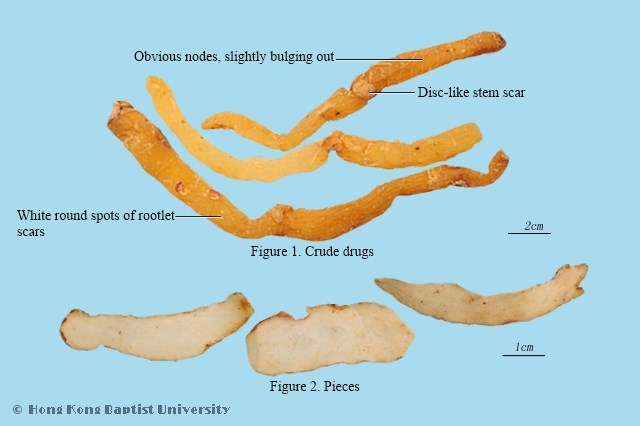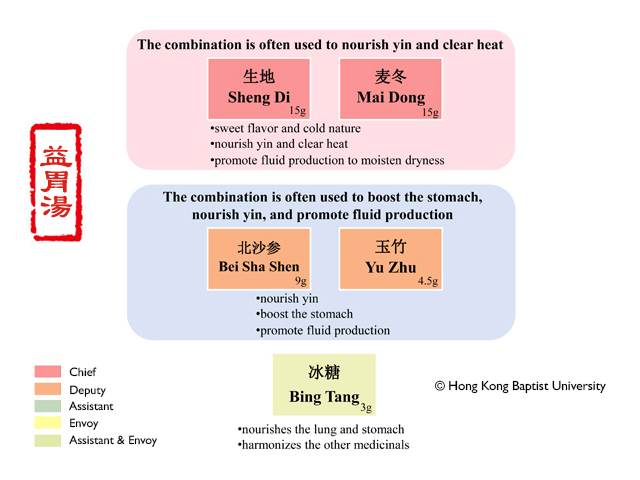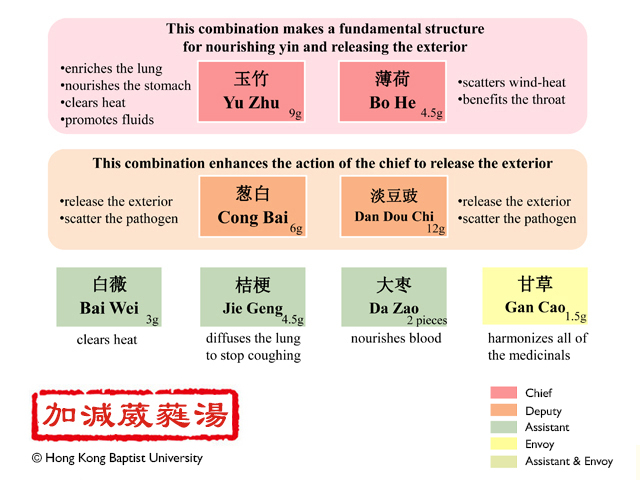Solomon's Seal Variant Decoction
Action:Nourishes yin and releases the exterior.
Indication:Jia Jian Wei Rui Tang is indicated for the pattern of yin deficient with external contraction of wind-heat. The signs and symptoms are headache, fever, slight aversion to wind-cold, absence of or a little bit of sweat, cough, vexation, thirst, dry throat, a red tongue, and a rapid pulse.


